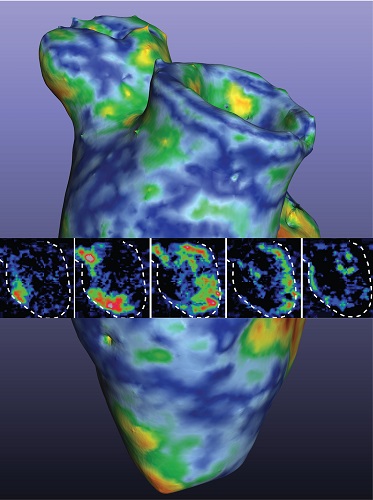Although it can be difficult to get heart muscle cells to propagate in large numbers, a team of researchers at the University of Minnesota has found a way to use 3D printing and light-induced excitation to create a living heart pump that has broad implications in medicine.
Historically, scientists have attempted to 3D print cardiomyocytes, heart muscle cells from stem cells, but could never reproduce them in sufficient numbers to establish their functionality. The Minnesota team tried a new approach, using an ink mixture made of proteins and combining it with human stem cells projected into a chamber structure.
According to the researchers’ published study, they created a photo-crosslinkable formulation of extracellular matrix proteins and used this “ink” to print human pluripotent stem cell structures, with two chambers and a vessel inlet and outlet. The researchers discovered that the muscles began to spontaneously beat together and responded to drugs and other pacing mechanisms.

A 3D rendering of the printed heart pump developed at the University of Minnesota. Courtesy of University of Minnesota.
The printing was accomplished with the aid of a 27-gauge needle with submillimeter resolution. This gelatin mixture was made to become sturdy over time, and could hold form. In the case of the experiment carried out at the University of Minnesota, the pump was the size of a mouse heart, millimeters wide.
“We printed the pumps using a ratio of 15 million stem cells per milliliter of bio-ink. We cultured these structures for two weeks prior to differentiating the stem cells, so the number of cells increased dramatically during this period,” said Brenda Ogle, lead researcher and head of the Department of Biomedical Engineering at the university. “This initial proliferation phase was crucial to achieving contiguous muscle formation in the cardiac pump.”
Ogle said that in principle, making a larger version of the pump would simply require more material; however, it also would mean scaling up the equipment used in the laboratory, and a more complex vascular system would need to be accounted for in order to distribute nutrients.
“The material in which the cells were printed was activated by light,” Ogle said. “The bio-ink that we used to print the pumps was composed of native proteins found in the heart … Some of the protein components of the bio-ink were chemically modified so that they could be photo-crosslinked. This means that when the bio-ink is exposed to a specific wavelength of light, these proteins will become linked together, resulting in a stiffer structure, similar to the curing of plastics.”
Further, the researchers used optical mapping to visualize electrical signals across the surface of their pump, allowing for calculations of duration and conduction velocity.
Those involved in the study pointed out that this work could lead to a testing mechanism for cardiac devices and even allow for therapeutic tissue grafting containing complex cell networks.
This research was supported by the National Institutes of Health, the National Science Foundation Graduate Research Fellowship Project, and the University of Minnesota Doctoral Dissertation Fellowship. The study appeared in the American Heart Association’s Circulation Research (www.doi.org/10.1161/CIRCRESAHA.119.316155).